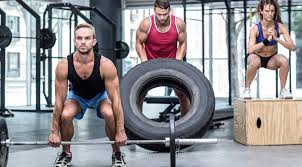In the world of competitive fitness, few disciplines demand the level of all-around performance that CrossFit does. Known for blending strength, endurance, and agility, CrossFit challenges athletes to push physical boundaries across a wide range of movements. Among the core athletic qualities required to excel are speed and power two components that CrossFit athletes develop through one key training principle: high-intensity functional training (HIFT).
But how exactly does high-intensity training enhance speed and power? The answer lies in the strategic combination of movement patterns, load, and explosive effort, repeated under time constraints and fatigue.
1. The Role of High-Intensity Functional Training (HIFT)
At its core, CrossFit relies on HIFT a training style characterized by constantly varied, functional movements performed at high intensity. Unlike traditional bodybuilding or steady-state cardio routines, HIFT pushes the entire neuromuscular system to operate at full capacity. The goal is to build real-world, transferable athleticism, and that includes improving both speed (how fast an athlete can move) and power (how much force they can produce quickly).
This training often includes movements such as:
- Olympic lifts (cleans, snatches)
- Plyometrics (box jumps, burpees)
- Sprint intervals
- Sled pushes and pulls
- Kettlebell swings and medicine ball throws
Each of these develops explosiveness, rapid force production, and acceleration, which are key to both sprinting speed and lifting power.
2. Power Development Through Olympic Lifting
Olympic lifts are a cornerstone of CrossFit programming. Movements like the clean and jerk or snatch require athletes to generate maximal force in a short period of time a textbook definition of power.
These lifts train:
- Rate of force development (RFD) – how fast an athlete can go from zero to max effort
- Neuromuscular coordination – combining speed and technique for maximum efficiency
- Posterior chain strength – developing glutes, hamstrings, and back muscles crucial for sprinting and jumping
By performing these lifts under high intensity and variable loads, CrossFit athletes increase their capacity to move heavy weights quickly and explosively the essence of power.
3. Speed Training Through Sprint Intervals and Agility Work
Though CrossFit isn’t a sprint-specific sport, many workouts incorporate short-distance runs, shuttle sprints, or sled sprints. These intervals develop acceleration mechanics and stride frequency, while the fatigue element builds the ability to maintain form under pressure.
Speed gains come from:
- High turnover drills (e.g., short sprints under 100m)
- Change of direction exercises (e.g., cone drills or shuttle runs)
- Resisted sprints (e.g., parachutes or weighted sleds)
These improve both linear speed and agility critical for CrossFit competitions that demand quick transitions between movements and rapid task completion.
4. Plyometric and Explosive Bodyweight Work
Exercises like box jumps, jump squats, burpee broad jumps, and wall ball throws train athletes to recruit fast-twitch muscle fibers quickly and repeatedly. These fibers are responsible for explosive movements and are central to both power and sprinting capability.
Incorporating plyometrics into high-intensity circuits means athletes are improving:
- Reactive strength – the ability to absorb and reuse force quickly
- Muscular elasticity – particularly in the lower limbs
- Jump height and takeoff speed – all contributing to sprint power
5. Metabolic Conditioning and CNS Adaptation
One of the often-overlooked elements of CrossFit’s high-intensity model is the central nervous system (CNS) adaptation. Regular exposure to varied, max-effort tasks trains the CNS to fire more efficiently, leading to quicker muscle contractions and faster movement.
Additionally, metabolic conditioning (“metcons”) push the body’s anaerobic energy systems, which are vital for short bursts of high-speed, high-power output. Athletes build the capacity to recover faster between explosive efforts, maintaining performance throughout longer workouts or competition rounds.
A System That Builds Speed and Power Together
CrossFit’s high-intensity training isn’t just about suffering through hard workouts it’s a carefully designed system that targets multiple athletic attributes simultaneously. By combining Olympic lifts, sprints, plyometrics, and bodyweight explosiveness into fast-paced, high-load circuits, CrossFit athletes build the neuromuscular efficiency, muscular strength, and metabolic capacity required to move faster and more powerfully.
In a world where speed and power often define the edge between winning and just finishing, high-intensity training is one of the most effective tools in a CrossFit athlete’s arsenal.

